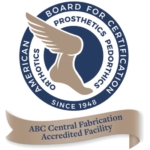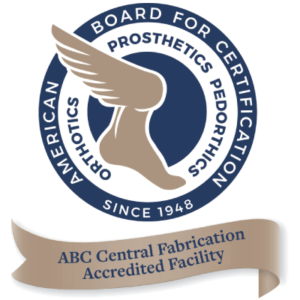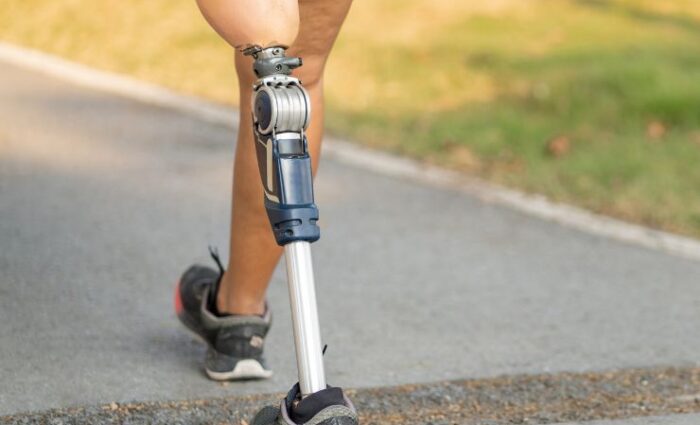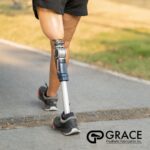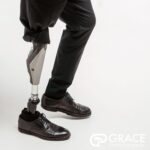The Critical Role of the Prosthetic Leg Socket in the Rehabilitation Process
When it comes to lower limb prosthetics, prosthetic leg sockets is perhaps the most critical component for ensuring a positive rehabilitation outcome. As the interface between the residual limb and the prosthetic device, the socket is responsible for comfort, control, and functionality, directly impacting patient mobility, independence, and overall quality of life. For physicians, surgeons, and rehabilitation specialists who treat amputees, understanding the intricacies of socket design and fabrication can significantly influence long-term outcomes.
Prosthetists serve as vital partners in this process, combining anatomical insight, biomechanical knowledge, and advanced fabrication techniques to deliver a socket that supports healing, prevents complications, and enables optimal function.
Understanding Prosthetic Leg Sockets’ Role in Lower Limb Rehabilitation
The prosthetic leg socket is more than just a connecting component—it’s a custom-molded structure that shapes the rehabilitation journey. Its design must accommodate changes in the residual limb, promote pressure distribution, and minimize the risk of skin breakdown or skin irritation.
A poorly fitted socket can cause long-term issues like gait abnormalities, chronic pain, or abandonment of the prosthetic device altogether. Conversely, a well-designed socket empowers the prosthetic user to regain independence and mobility.
The Residual Limb and Its Influence on Socket Design
Every residual limb is unique, influenced by factors such as amputation level, tissue volume, scarring, and sensitivity. These differences necessitate a highly individualized approach to prosthetic socket design.
Key considerations include:
- Volume fluctuations due to post-operative healing or weight changes
- Bony prominences that require additional padding or contouring
- Skin integrity and potential for skin breakdown
- Alignment and muscle activity that affect weight distribution
By evaluating these characteristics, the prosthetist can develop a custom socket that addresses both biomechanical and physiological demands.
From Test Socket to Final Fit: The Prosthetist’s Process
Creating a prosthetic leg socket is a multi-step, iterative process involving assessment, design, testing, and adjustment. Collaboration between the medical team and prosthetist ensures each stage meets the patient’s functional and anatomical needs.
Step 1: Residual Limb Evaluation and Cast
A comprehensive assessment and cast of the residual limb allow for capturing anatomical contours, load-bearing regions, and pressure-sensitive areas. This informs initial socket shape and aids in pressure distribution planning.
Step 2: Test Socket (Check Socket) Fitting
The test socket—often referred to as a check test—is a transparent prototype that enables the prosthetist to assess fit, comfort, and alignment. It’s used to:
- Observe how the residual limb behaves under weight-bearing conditions
- Detect any pressure points or areas causing skin irritation
- Confirm effective suspension and socket and the residual limb interaction
This crucial stage allows for iterative adjustments before fabricating the final socket.
Step 3: Final Socket Fabrication
Using insights gathered from the test fitting, the prosthetist creates a fitted socket using high-quality materials tailored to the patient’s activity level and lifestyle. For knee amputees, special attention is paid to rotational control and weight transfer to optimize knee mechanics.
Step 4: Follow-Up and Long-Term Adjustments
Rehabilitation is dynamic. Over time, the residual limb may shrink or change shape, necessitating socket modifications. Regular follow-up ensures:
- Ongoing comfort and functionality
- Prevention of skin breakdown
- Proper alignment and gait
- Continued use of the prosthetic device
Socket Shapes and Suspension Systems: Personalized for Performance
There is no one-size-fits-all solution when it comes to prosthetic leg sockets. Socket shapes are adapted based on the patient’s limb profile, mobility goals, and suspension system used.
Common Socket Designs
- Patellar Tendon Bearing (PTB): Uses pressure-tolerant areas for load transfer; common for transtibial amputees.
- Total Surface Bearing (TSB): Distributes pressure evenly across the residual limb.
- Subischial and Ischial Containment: Provide control and stability for transfemoral amputees.
Suspension Systems
A well-functioning suspension system ensures that the socket stays securely attached during movement. Options include:
- Suction systems
- Pin-lock systems with prosthetic liners
- Vacuum-assisted suspension
- Sleeve suspensions
Selecting the right suspension method is key to preventing pistoning, enhancing proprioception, and improving overall mobility.
Addressing Common Socket-Related Challenges
Even with the best design, patients can experience socket-related complications. Prosthetists work closely with healthcare providers to address and prevent issues like:
- Volume Loss: Managed through the use of a prosthetic sock or socket relining.
- Skin Irritation: Addressed through improved padding, adjusted pressure points, and upgraded prosthetic liners.
- Discomfort with Weight Bearing: Resolved through realignment and reshaping to optimize pressure distribution.
Open communication with the patient is essential to detect and solve issues early.
Partnering with Prosthetists to Enhance Rehabilitation Outcomes
Physicians and rehabilitation teams can improve outcomes by engaging prosthetists early in the recovery process. Prosthetists not only fabricate prosthetic leg sockets, but also educate patients, ensure proper fit, and track long-term progress.
Key benefits of collaboration include:
- Preventing delayed prosthesis use due to poor fit
- Reducing risk of injury from misaligned sockets
- Improving patient confidence and compliance
- Achieving faster return to activity
Regular communication ensures the prosthetic team is aware of surgical techniques used, soft tissue concerns, and any post-operative complications that may influence socket design.
Best Practices for Doctors and Specialists Referring Patients
To streamline care and improve prosthetic outcomes, physicians should:
- Refer patients to a prosthetist early in post-operative care
- Monitor residual limb volume and skin condition
- Encourage patient feedback regarding comfort and fit
- Document any changes in mobility, skin condition, or alignment
- Collaborate with prosthetists for timely adjustments and custom solutions
This approach ensures the prosthetic user receives personalized care aligned with their evolving needs.
Why Prosthetic Leg Socket Design Matters More Than Ever
With advancements in prosthetic fabrication, modern sockets offer better comfort, functionality, and durability. Materials like carbon fiber, thermoplastics, and advanced silicones allow for lightweight yet strong prosthetic sockets that adapt to patient anatomy.
However, these materials must be combined with expertise and precision. The success of a prosthetic device depends on how well the socket integrates with the patient’s residual limb and lifestyle.
As healthcare providers, ensuring your patients receive a high-quality, properly fitted socket is one of the most impactful decisions you can make in their recovery journey.
Work With Our Prosthetic Fabricators Today!
The success of a prosthesis starts with a socket designed for the individual. At Grace Prosthetic Fabrication, we partner with medical professionals to produce custom, high-quality prosthetic leg sockets tailored to each patient’s unique needs. Our team works closely with prosthetists and clinicians to ensure patients have the best possible start on their journey to mobility, independence, and improved quality of life.
Work With Our Prosthetic Fabricators Today!

